Others
Criteria for Selection of World Heritage Sites
Posted On:
19 JUL 2024 6:13PM
With India hosting the World Heritage Committee Meeting for the first time this year, the global community anticipates a significant gathering of delegates from various nations. Scheduled to take place in New Delhi from July 21-31, 2024, the 46th session aims to facilitate dialogue and cooperation in safeguarding the cultural, natural, and mixed heritage sites across the globe. This gathering underscores the collective commitment towards protecting and conserving these invaluable treasures for future generations.
The 46th session of the World Heritage Committee in 2024 will examine 27 nominations from around the world, including 19 Cultural, 4 Natural, 2 Mixed sites and 2 Significant modifications to the boundaries. Out of which, India’s Moidams – The Mound – Burial System of the Ahom Dynasty is set to be examined under the category of Cultural Property.
Details of Moidams – the Mound – Burial System of the Ahom Dynasty, can be found here.
To know more about the nominations of the 46th Session (2024), click here.
World Heritage List Nominations
Only countries that have signed the World Heritage Convention, pledging to protect their natural and cultural heritage, can submit nomination proposals for properties on their territory to be considered for inclusion in UNESCO’s World Heritage List. The Nomination Process is stated as follows:
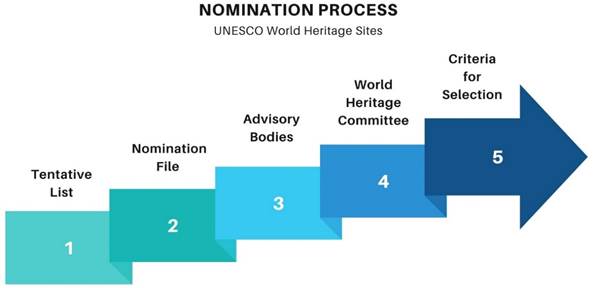
1. The Tentative List
The first step a country must take is to make an ‘inventory' of its important natural and cultural heritage sites located within its boundaries. This ‘inventory' is known as the Tentative List, and provides a forecast of the properties that a State Party may decide to submit for inscription in the next five to ten years and which may be updated at any time. It is an important step since the World Heritage Committee cannot consider a nomination for inscription on the World Heritage List unless the property has already been included on the State Party's Tentative List.
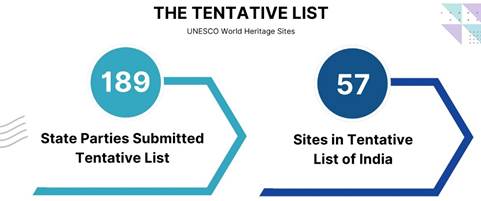
2. The Nomination File
By preparing a Tentative List and selecting sites from it, a State Party can plan when to present a nomination file. The nomination is submitted to the World Heritage Centre for review and to check it is complete. Once a nomination file is complete the World Heritage Centre sends it to the appropriate Advisory Bodies for evaluation.
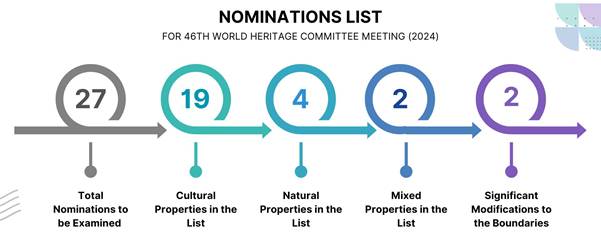
3. The Advisory Bodies
A nominated property is independently evaluated by two Advisory Bodies mandated by the World Heritage Convention: the International Council on Monuments and Sites (ICOMOS) and the International Union for Conservation of Nature (IUCN), which respectively provide the World Heritage Committee with evaluations of the cultural and natural sites nominated. The third Advisory Body is the International Centre for the Study of the Preservation and Restoration of Cultural Property (ICCROM), an intergovernmental organization which provides the Committee with expert advice on conservation of cultural sites, as well as on training activities.
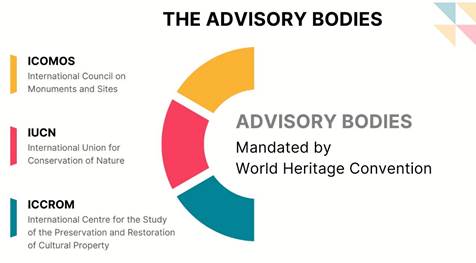
4. The World Heritage Committee
Once a site has been nominated and evaluated, it is up to the intergovernmental World Heritage Committee to make the final decision on its inscription. Once a year, the Committee meets to decide which sites will be inscribed on the World Heritage List. It can also defer its decision and request further information on sites from the States Parties.
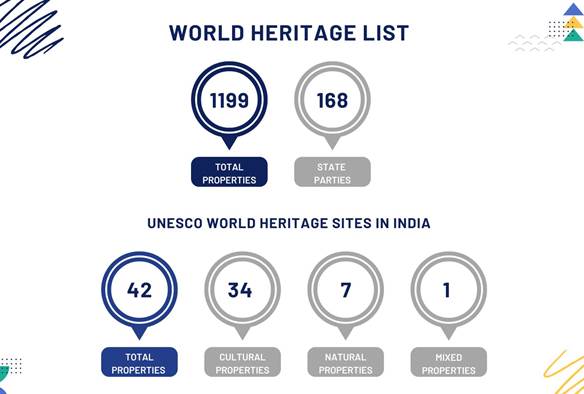
5. The Criteria for Selection
To be included on the World Heritage List, sites must be of outstanding universal value and meet at least one out of ten selection criteria. The criteria are regularly revised by the Committee to reflect the evolution of the World Heritage concept itself. Until the end of 2004, World Heritage sites were selected on the basis of six cultural and four natural criteria. With the adoption of the revised Operational Guidelines for the Implementation of the World Heritage Convention, only one set of ten criteria exists. The ten selection criteria are listed as follows:
To represent a masterpiece of human creative genius;
To exhibit an important interchange of human values, over a span of time or within a cultural area of the world, on developments in architecture or technology, monumental arts, town-planning or landscape design;
To bear a unique or at least exceptional testimony to a cultural tradition or to a civilization which is living or which has disappeared;
To be an outstanding example of a type of building, architectural or technological ensemble or landscape which illustrates (a) significant stage(s) in human history;
To be an outstanding example of a traditional human settlement, land-use, or sea-use which is representative of a culture (or cultures), or human interaction with the environment especially when it has become vulnerable under the impact of irreversible change;
To be directly or tangibly associated with events or living traditions, with ideas, or with beliefs, with artistic and literary works of outstanding universal significance. (The Committee considers that this criterion should preferably be used in conjunction with other criteria);
To contain superlative natural phenomena or areas of exceptional natural beauty and aesthetic importance;
To be outstanding examples representing major stages of earth's history, including the record of life, significant on-going geological processes in the development of landforms, or significant geomorphic or physiographic features;
To be outstanding examples representing significant on-going ecological and biological processes in the evolution and development of terrestrial, fresh water, coastal and marine ecosystems and communities of plants and animals;
To contain the most important and significant natural habitats for in-situ conservation of biological diversity, including those containing threatened species of outstanding universal value from the point of view of science or conservation.
As delegates convene to assess these nominations in the World Heritage Committee Meetings against the ten rigorous criteria, the commitment to safeguarding our shared heritage for future generations remains steadfast. The 46th Committee meeting will not only foster dialogue but also reinforce the importance of collective action in conserving these invaluable treasures, ensuring they continue to inspire and educate people around the world.
References
Click here to see in PDF:
Santosh Kumar/Sarla Meena/Ritu Kataria/Apoorva Mahiwal
(Backgrounder ID: 151939)
Visitor Counter : 1470
Provide suggestions / comments